当前位置:网站首页>5. Function recursion exercise
5. Function recursion exercise
2022-07-06 13:25:00 【It's Wang Jiujiu】
Catalog
TEXT 1 Recursively print each bit of an integer
TEXT 2 Print each bit of an integer in reverse order
TEXT 3 Recursive search n(n≥1) The factorial ( Overflow is not considered )
TEXT 4 strlen The simulation ( Recursive implementation )
TEXT 5 Reverse string order ( Recursive implementation )
TEXT 6 Calculate the sum of each of a number ( Recursive implementation )
TEXT 7 Recursive implementation n Of k Power
TEXT 8 Calculate Fibonacci number
TEXT 1 Recursively print each bit of an integer
for example :124, Print in order 1 2 4.
Ideas :
for example : Set up a function print, Print 124 Every one of them . take 124 Split into print(12) And print separately 4; then 12 Split into print(1) And print separately 2;print(1) when , Judge 1 It's a single digit , Stop recursion , Print directly 1.
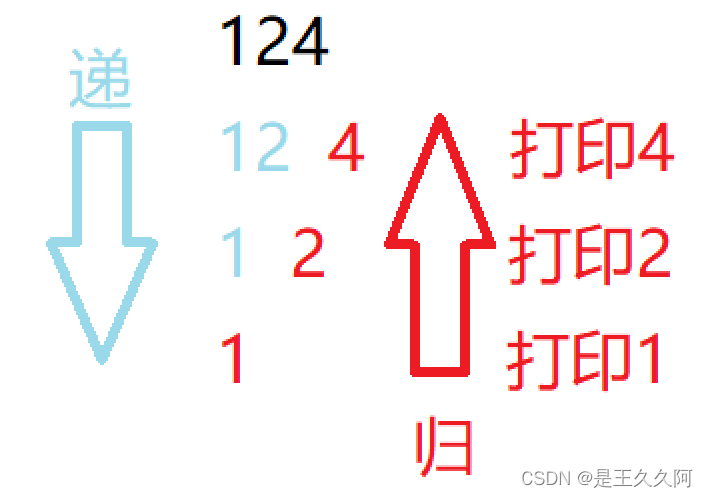
#include<stdio.h>
void print(int x)
{
if (x / 10 != 0)
{
print(x / 10);
}
printf("%d ", x % 10);
}
int main()
{
int a = 124;
print(a);
return 0;
}TEXT 2 Print each bit of an integer in reverse order
for example :124, Print in reverse order 4 2 1.
Ideas :
Print before recursion , You can complete the reverse order printing .
#include<stdio.h>
void print(int a)
{
if (a / 10 != 0)
{
printf("%d ", a % 10);
print(a / 10);
}
else
printf("%d ", a);
}
int main()
{
int a = 124;
print(a);
return 0;
}TEXT 3 Recursive search n(n≥1) The factorial ( Overflow is not considered )
Ideas :
for example :4! Split into : seek 3! and *4;3! Split into :2! and *3;2! Split into 1! and *2; When n=1 when , Stop recursion .
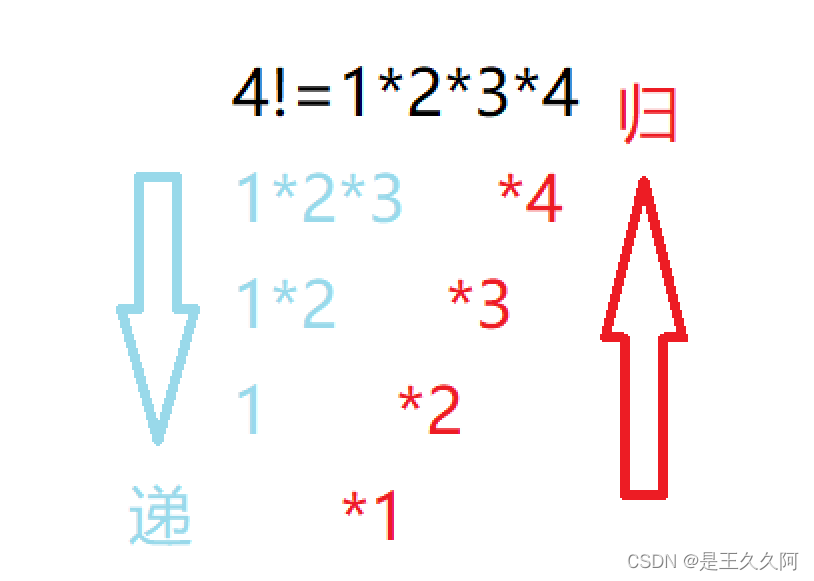
#include<stdio.h>
int fac(unsigned int n)
{
int sum = 1;
if (n > 1)
{
sum=fac(n - 1);
}
sum *= n;
return sum ;
}
int main()
{
unsigned int n = 0;
scanf("%d", &n);
printf("%u\n", fac(n));
return 0;
}TEXT 4 strlen The simulation ( Recursive implementation )
strlen You can find the length of the string , The result does not contain a terminator ‘\0’. Create a function , simulation strlen The function of .
Ideas :
We set up a function simulation strlen when , When the string reads ‘\0’ when , End of the iteration .
for example : Find string “abc” The length of , It can be divided into :1+ character string “bc” The length of ; Find string “bc” The length of is divided into :1+ Find string “c” The length of ; Find string “c” The length of is divided into :1+‘\0’; encounter ‘\0’ Stop recursion .
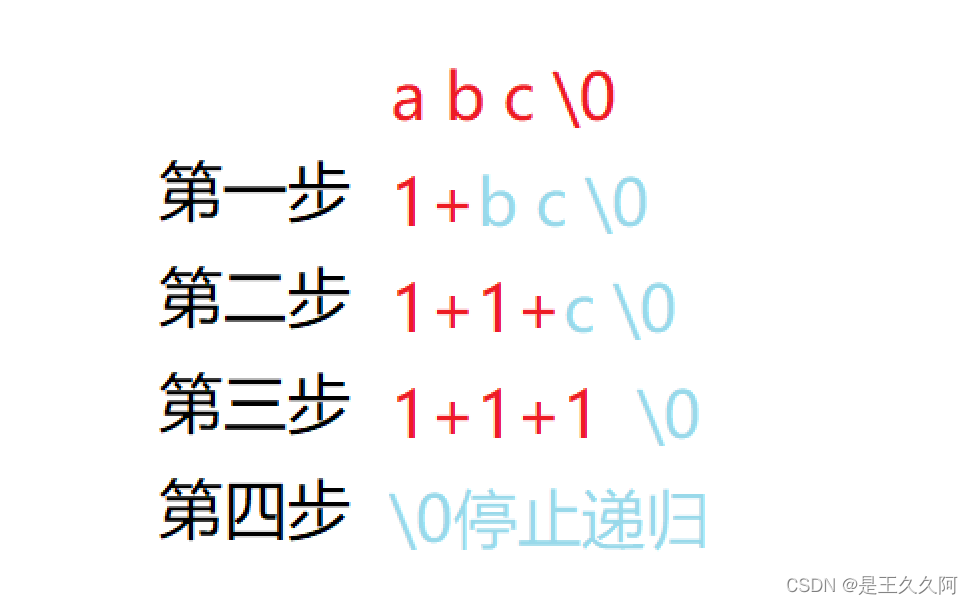
#include<stdio.h>
int my_strlen(char* arr)
{
if (*arr != '\0')
{
return 1+my_strlen(arr + 1);
}
}
int main()
{
char arr[] = "abcdef";
printf("%d\n", my_strlen(arr));
return 0;
}TEXT 5 Reverse string order ( Recursive implementation )
Write a function reverse_string(char * string)( Recursive implementation )// Only one parameter can be passed
Realization : Invert the characters in the parameter string , Not in reverse order .
requirement : Out of commission C String manipulation functions in the function library .
Ideas :
Reverse string , It can be understood that the 1 Characters and last 1 Character exchange , The first 2 Exchange with the penultimate ...... When the remaining characters in the middle are 1 when , Stop iterating .
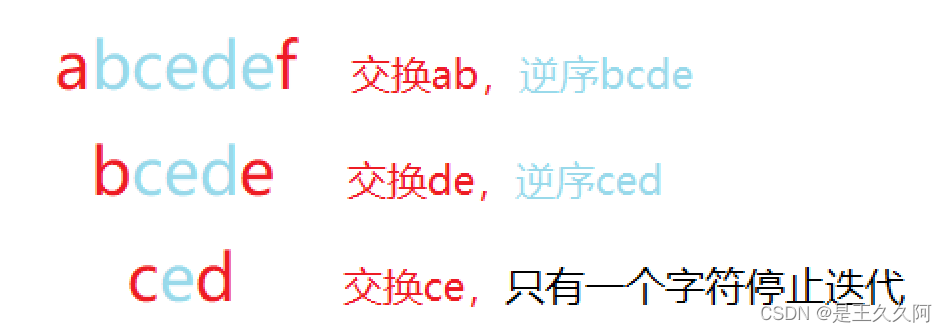
The specific operation of the exchange process :
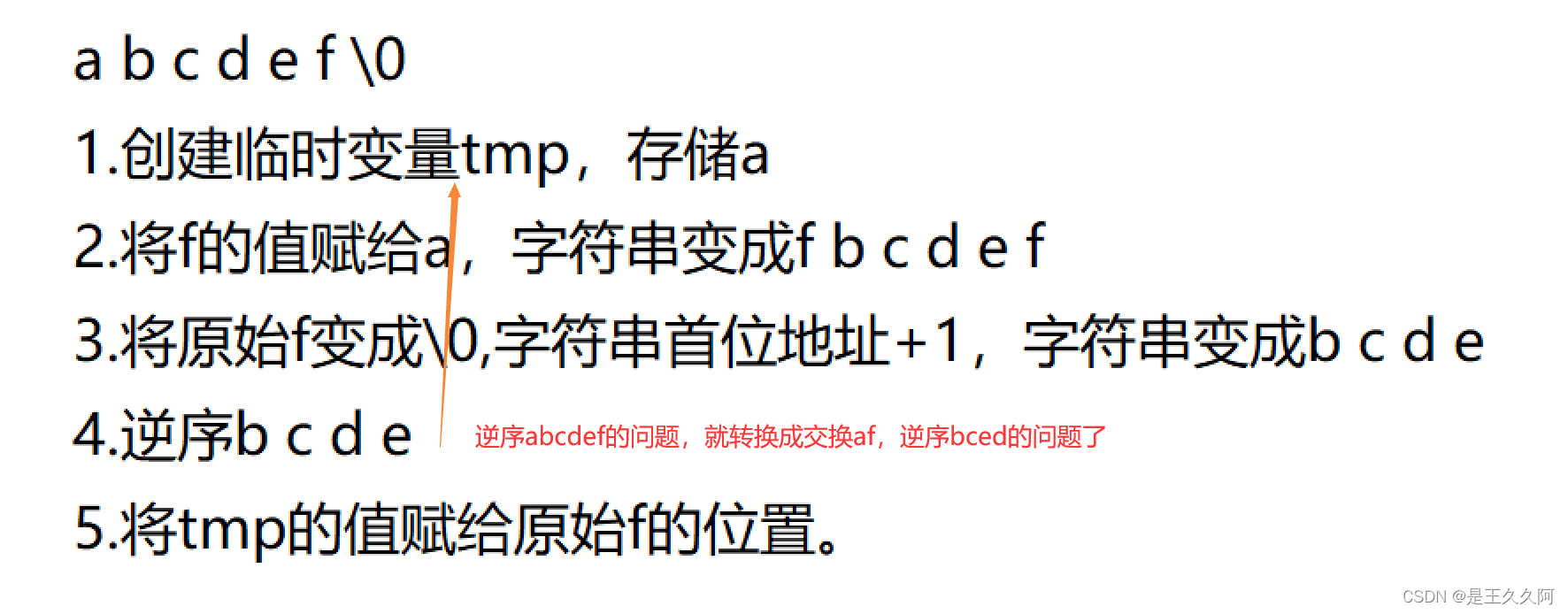
#include<stdio.h>
int my_strlen(char* str)
{
if (*str != '\0')
{
return 1+my_strlen(str + 1);
}
}
void reverse(char* arr)
{
char temp = 0;// Temporary variable , Storage a Value
int left = 0;
int right = my_strlen(arr) - 1;
temp = *arr;
*arr = *(arr + right);// Assign the following value to the front
*(arr + right) = '\0';// Turn the last one into '\0'
if (my_strlen(arr + 1) > 1)
{
reverse(arr + 1);
}
*(arr + right) = temp;// Set the value in the temporary variable , Assign to the back
}
int main()
{
char arr[] = "abcdef";
reverse(arr);
printf("%s\n", arr);
}Because the problem requires that the function can only pass one parameter , So you need to create many temporary variables .
TEXT 6 Calculate the sum of each of a number ( Recursive implementation )
Write a recursive function DigitSum(n), Enter a non negative integer , Returns the sum of the numbers that make up it
for example , call DigitSum(153), You should go back to 1 + 5 + 3, Its sum is 9
Input :153, Output :9
Ideas :
153 Split into 15 and +3;15 Split into 1 and +5;1 Is each digit , Stop recursion , return 1.
#include<stdio.h>
int DigitSum(n)
{
int sum = 0;
if (n / 10 != 0)
{
sum =DigitSum(n / 10);
}
return sum += n % 10;
}
int main()
{
unsigned int num = 0;
scanf("%d", &num);
printf("%d\n", DigitSum(num));
return 0;
}TEXT 7 Recursive implementation n Of k Power
Utilization function pow(n,k) You can ask for n Of k Power ,pow The use of the function needs to include the header file <math.h>.
Now write a function implementation n Of k Power , Use recursion to implement .
Ideas :
Need to take into account k Value range of
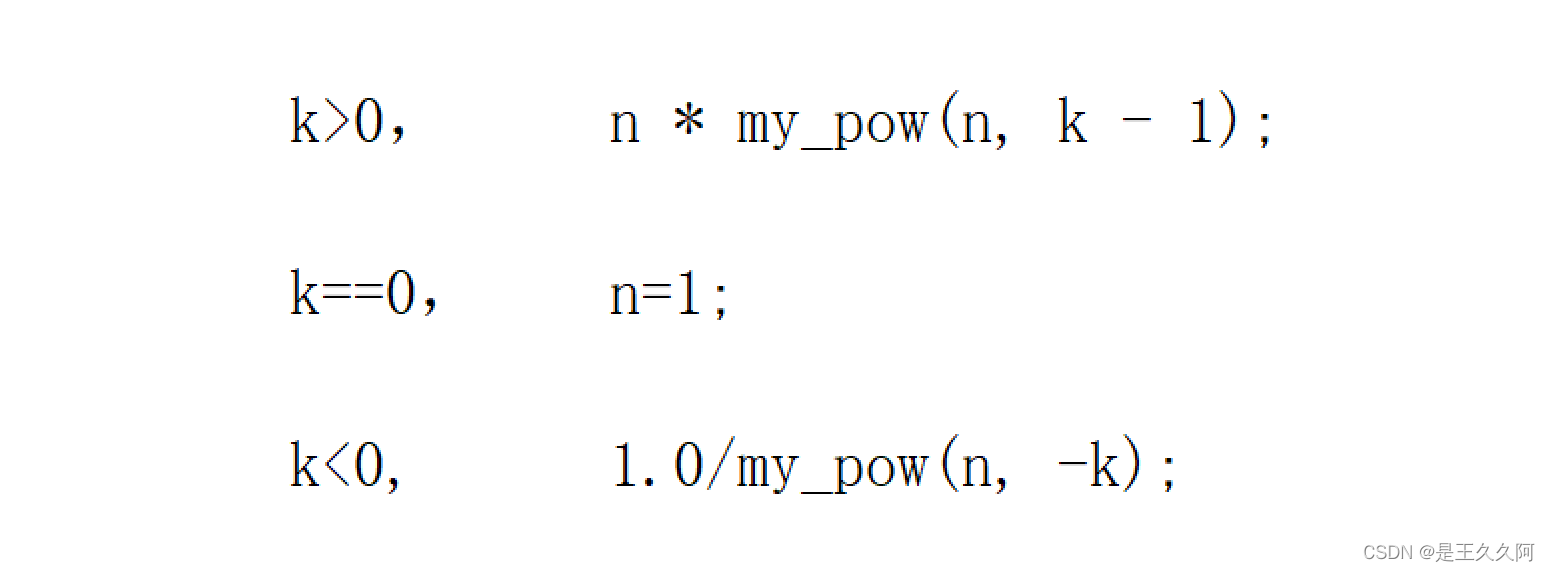
#include<stdio.h>
double my_pow(double n,int k)
{
if (k > 0)
return n * my_pow(n, k - 1);
else if (k == 0)
return 1;
else
return 1.0 / my_pow(n, -k);
}
int main()
{
double n = 0.0;
int k = 0;
scanf("%lf%d", &n, &k);
printf("%g\n", my_pow(n, k));//%g, Omit meaningless when printing floating-point numbers 0
return 0;
}TEXT 8 Calculate Fibonacci number
Fibonacci number :1、1、2、3、5、8、13、21、34、56...... Start with the third item , The value of each term is equal to the sum of the first two terms .
Ideas :
For example, when n=5 when , The first 5 Fibonacci Numbers = The fourth Fibonacci number (n-1)+ The third Fibonacci number (n-2)
The fourth Fibonacci number = The third Fibonacci number (n-2)+ The second Fibonacci number (n-3)
The third Fibonacci number = The second Fibonacci number 1+ The first Fibonacci number 1.

#include<stdio.h>
int fibo(int n)
{
if (n > 2)
return fibo(n - 1) + fibo(n - 2);
else
return 1;
}
int main()
{
int n = 0;
scanf("%d", &n);
printf("%d\n", fibo(n));
return 0;
}TEXT 9 Take the steps
n Steps , You can choose to go one step or two steps at a time , So how many ways to walk ?(1≤n≤30)
Ideas :
When n=1 when , There must be only one way ; When n=2 when , There are two ways ; And so on , When n>2 when , Then there is (n-1)+(n-2) Seed walking method .
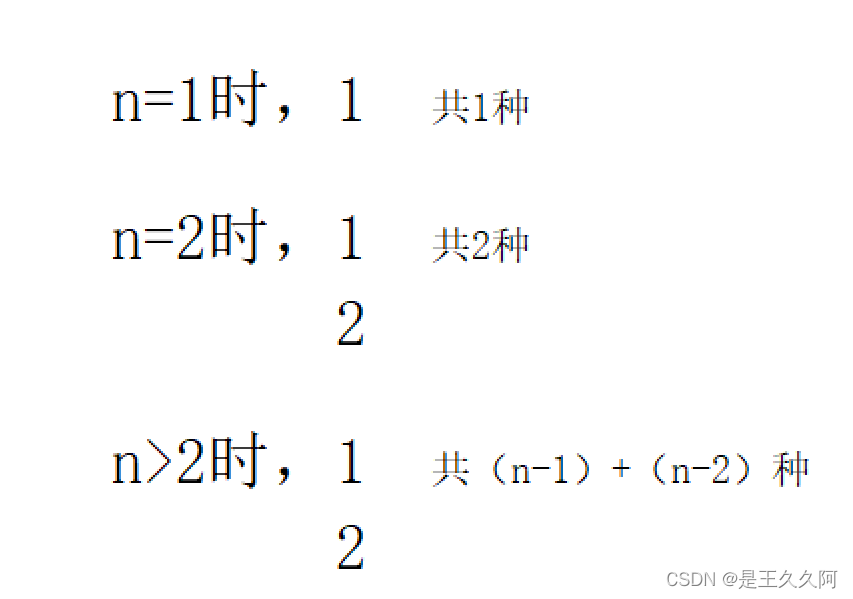
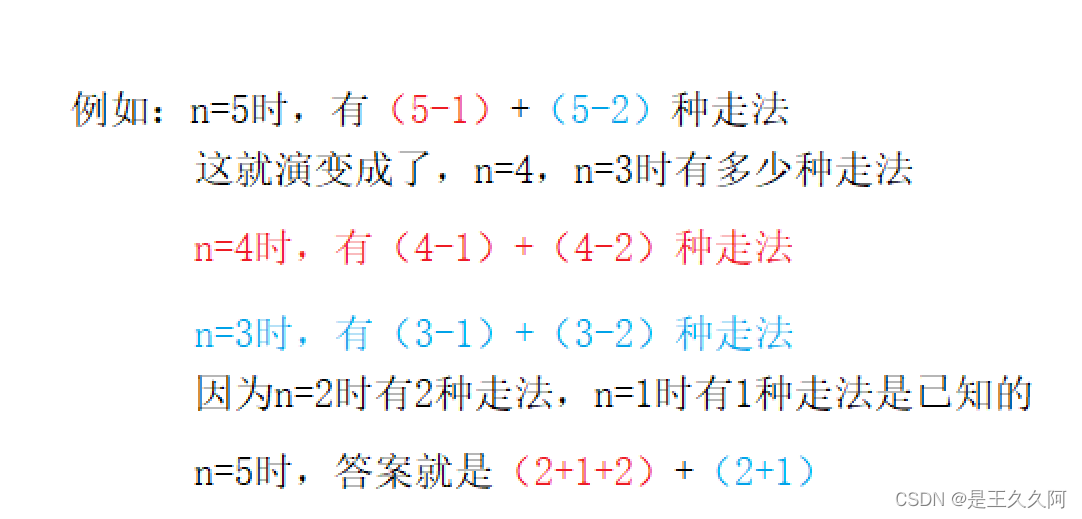
#include<stdio.h>
int sum(int n)
{
if (n > 2)
return sum(n - 1) + sum(n - 2);
else if (n == 2)
return 2;
else
return 1;
}
int main()
{
int n = 0;
scanf("%d", &n);
printf("%d\n", sum(n));
return 0;
}边栏推荐
- 1.C语言矩阵加减法
- The overseas sales of Xiaomi mobile phones are nearly 140million, which may explain why Xiaomi ov doesn't need Hongmeng
- Alibaba cloud microservices (III) sentinel open source flow control fuse degradation component
- 12 excel charts and arrays
- Introduction pointer notes
- Relational algebra of tyut Taiyuan University of technology 2022 database
- 6.函数的递归
- Tyut outline of 2022 database examination of Taiyuan University of Technology
- IPv6 experiment
- MySQL Database Constraints
猜你喜欢

20220211-CTF-MISC-006-pure_ Color (use of stegsolve tool) -007 Aesop_ Secret (AES decryption)
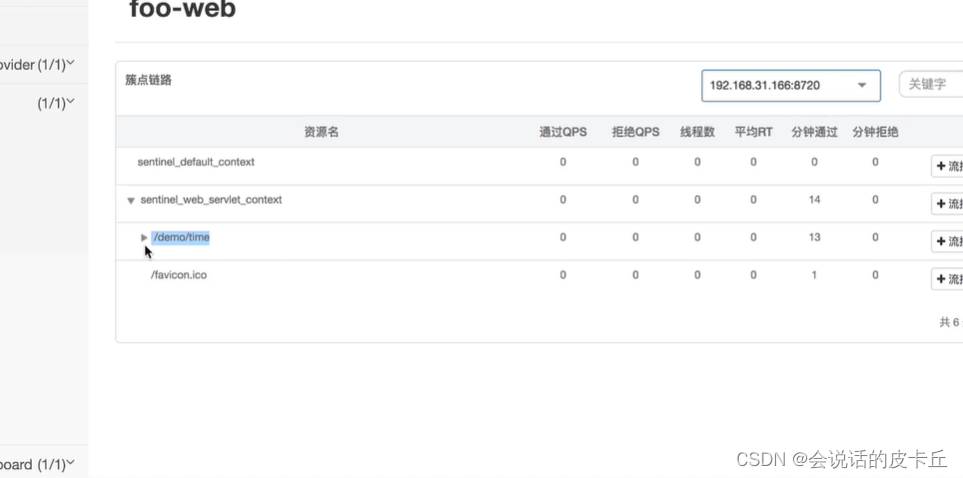
Alibaba cloud microservices (III) sentinel open source flow control fuse degradation component
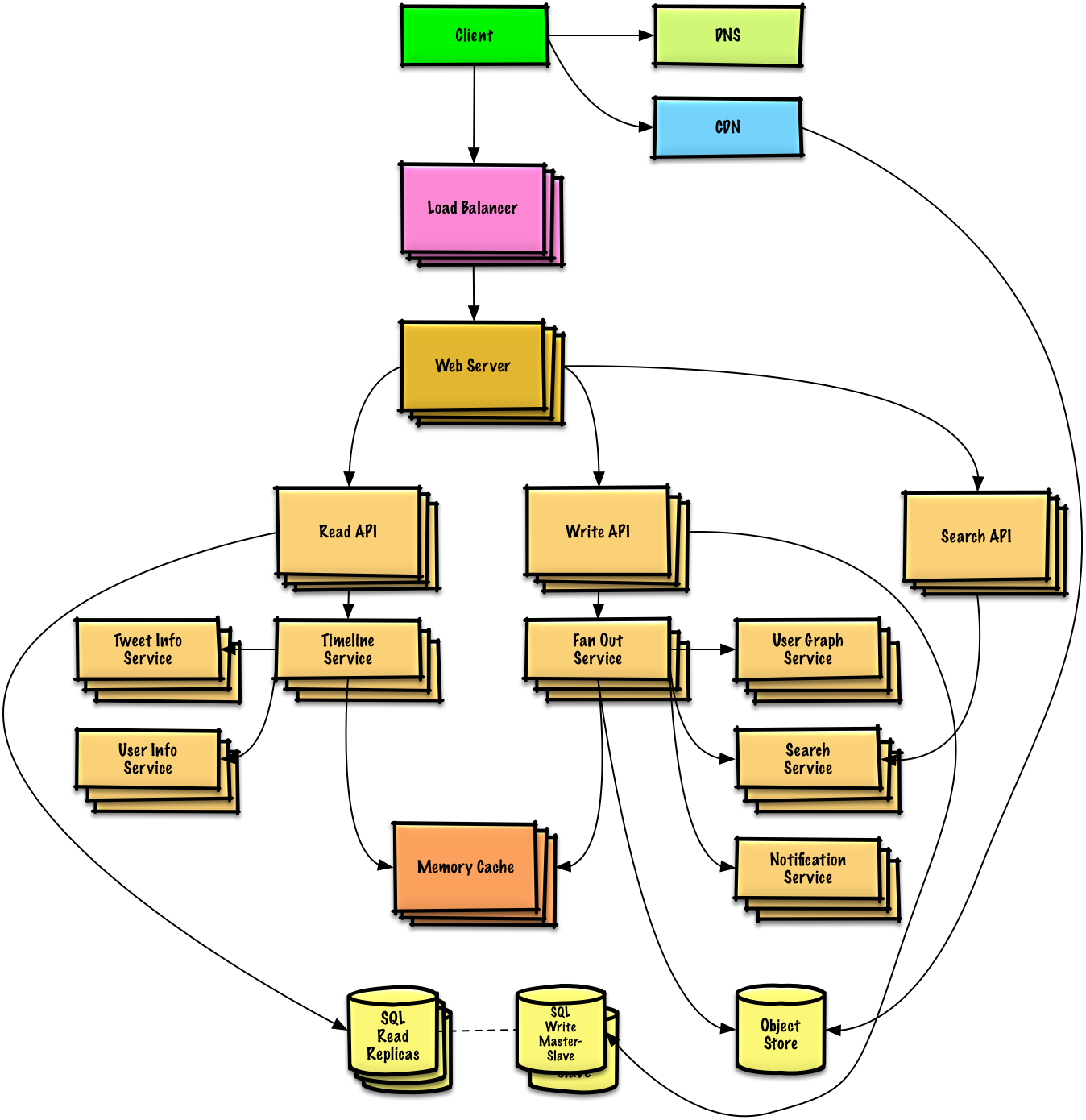
系统设计学习(一)Design Pastebin.com (or Bit.ly)
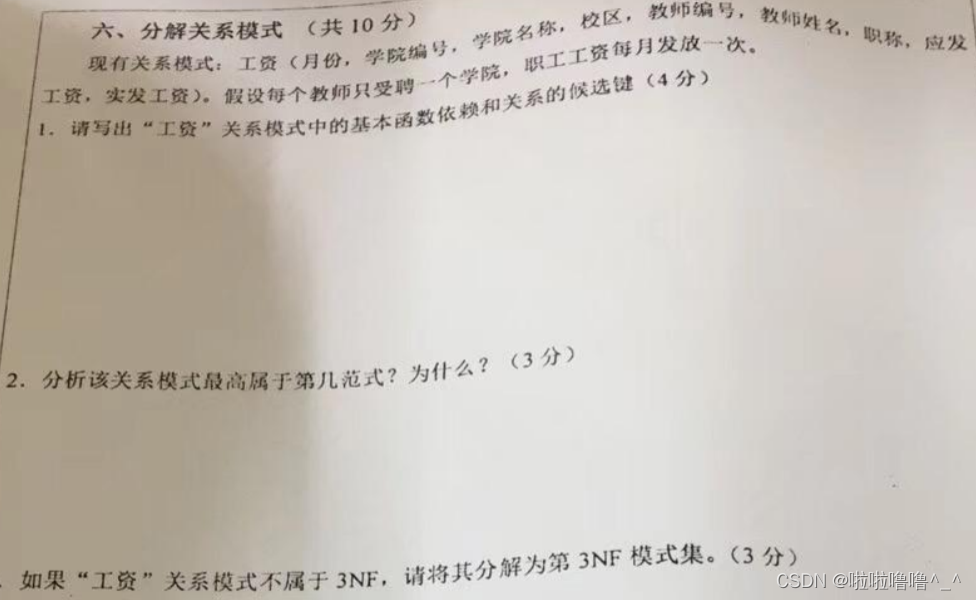
Decomposition relation model of the 2022 database of tyut Taiyuan University of Technology
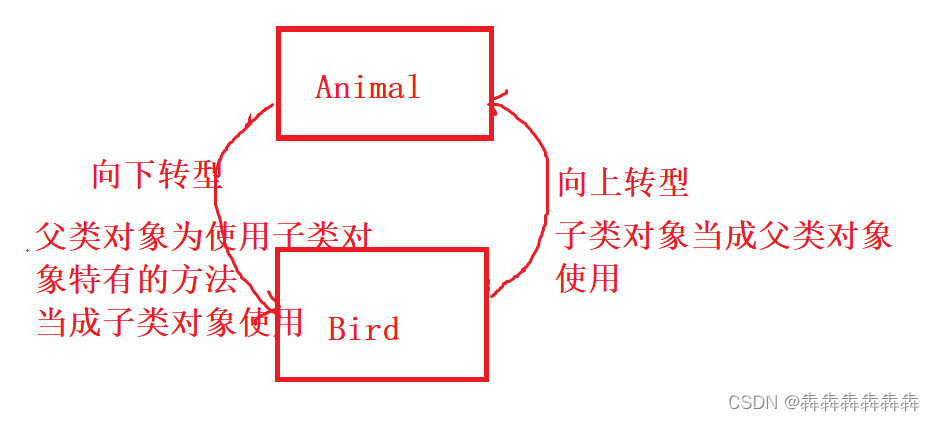
Inheritance and polymorphism (Part 2)
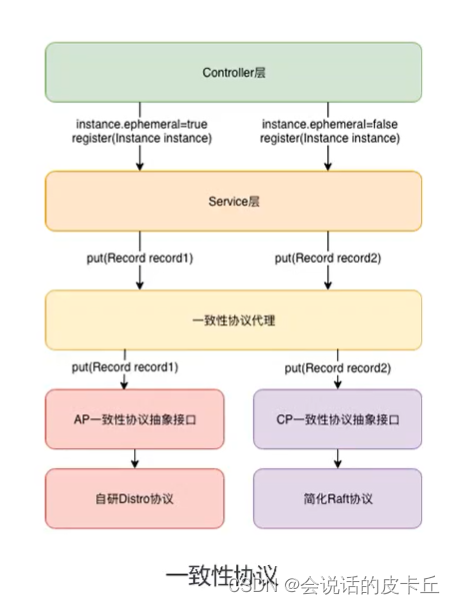
Alibaba cloud microservices (II) distributed service configuration center and Nacos usage scenarios and implementation introduction
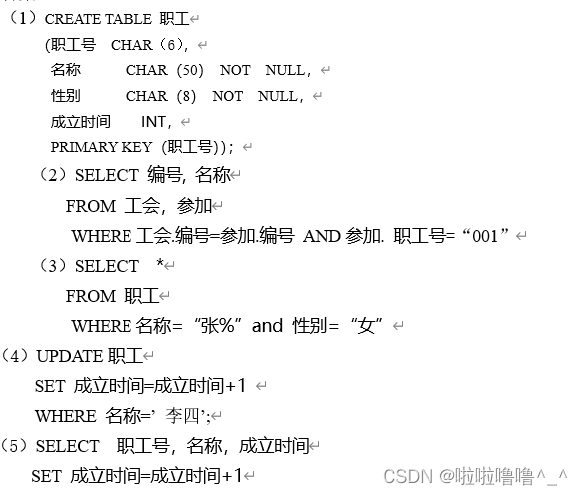
Database operation of tyut Taiyuan University of technology 2022 database

TYUT太原理工大学2022数据库题库选择题总结
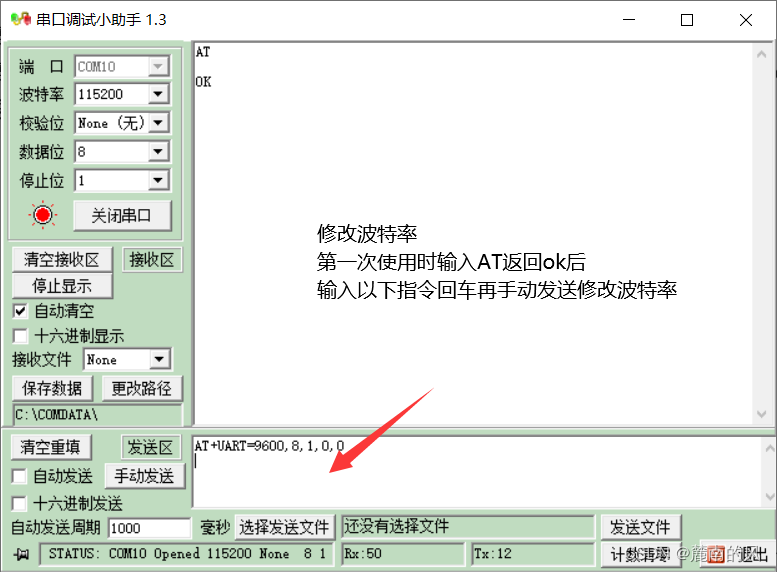
(ultra detailed onenet TCP protocol access) arduino+esp8266-01s access to the Internet of things platform, upload real-time data collection /tcp transparent transmission (and how to obtain and write L

2.C语言矩阵乘法
随机推荐
Share a website to improve your Aesthetics
Record: newinstance() obsolete replacement method
8.C语言——位操作符与位移操作符
Differences and application scenarios between MySQL index clock B-tree, b+tree and hash indexes
Tyut Taiyuan University of technology 2022 "Mao Gai" must be recited
162. Find peak - binary search
2年经验总结,告诉你如何做好项目管理
Exception: ioexception:stream closed
【话题终结者】
TYUT太原理工大学2022数据库大题之数据库操作
Inheritance and polymorphism (Part 2)
IPv6 experiment
FileInputStream和BufferedInputStream的比较
Answer to "software testing" exercise: Chapter 1
Redis介绍与使用
Alibaba cloud microservices (II) distributed service configuration center and Nacos usage scenarios and implementation introduction
Quickly generate illustrations
用栈实现队列
Arduino+ds18b20 temperature sensor (buzzer alarm) +lcd1602 display (IIC drive)
Design a key value cache to save the results of the most recent Web server queries